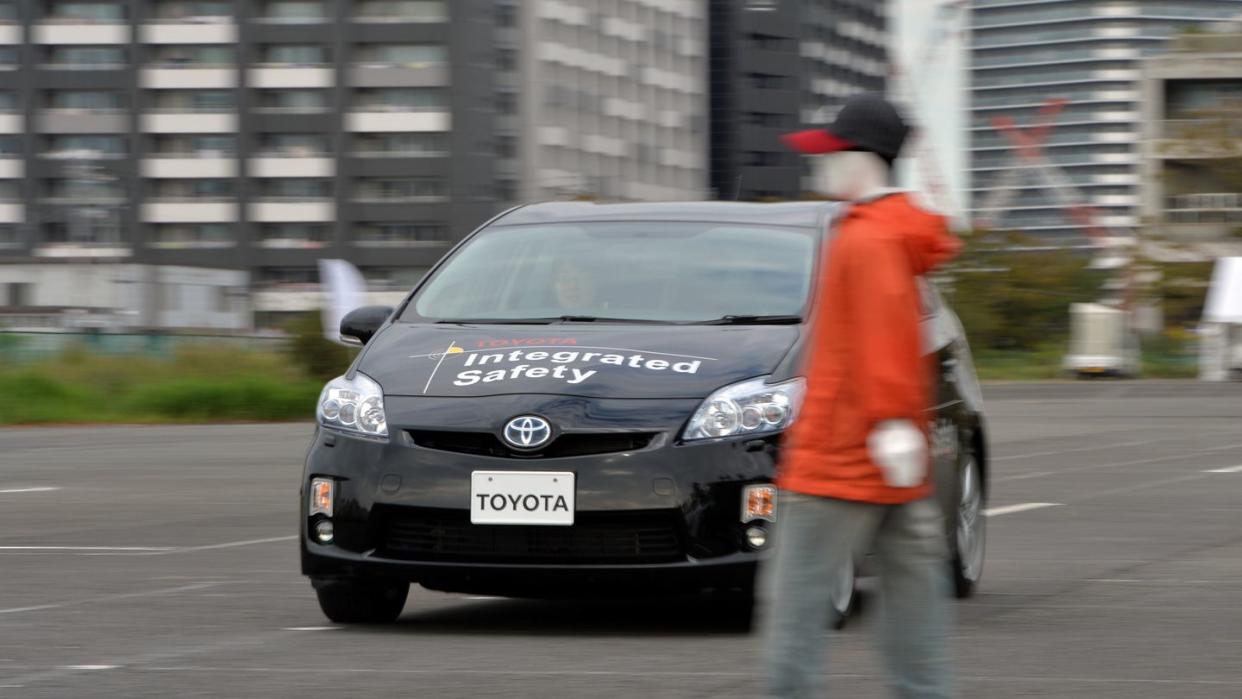Soon, All New Cars Will Be Required to Have This System Standard

The National Highway Transportation Safety Administration will require that cars and light trucks feature automatic emergency braking (AEB) starting in September 2029.
The NHTSA will also require that vehicle safety systems be able to detect pedestrians in daylight and at night.
Many automakers already offer AEB and more advanced systems that can detect cyclists approaching from behind a parked vehicle.
The brave new world of driver-assist systems has produced its measure of useful items, like backup cameras, but also some deeply unpalatable trends like SAE Level 2 systems that can be easily misused.
But if there is a general consensus on the usefulness of one particular driver-assist system, it's automatic emergency braking (AEB).
Starting in September 2029, the NHTSA will make automatic emergency braking standard standard on all passenger cars and light trucks. This includes automatic emergency braking for pedestrians.
"Automatic emergency braking is proven to save lives and reduce serious injuries from frontal crashes, and this technology is now mature enough to require it in all new cars and light trucks. In fact, this technology is now so advanced that we're requiring these systems to be even more effective at higher speeds and to detect pedestrians," said NHTSA Deputy Administrator Sophie Shulman.
The agency expects that this standard will prevent at least 24,000 injuries and at a minimum of 360 deaths a year.
But there are a couple of interesting requirements within this finalized rule.
The first is that the new rule will require will require vehicles "to stop and avoid contact with a vehicle in front of them up to 62 miles per hour." AEB systems will also be required to apply the brakes automatically when collision is imminent, at up to 90 mph.
The second is that AEB systems must also be able to detect pedestrians in daylight and in darkness, and apply the brakes automatically at up to 45 mph when a pedestrian is detected.
The provision regarding detecting pedestrians is somewhat trickier, as it may not require merely radar sensors, but will have to rely on a thermal camera or lidar-based system that can track and classify different objects.
"Most new vehicles already come with AEB, and we expect that many cars and light trucks will be able to meet this standard ahead of the deadline, meaning even more lives will be saved thanks to this technology," Shulman added.
But the planned rule is silent in regards to detecting bicyclists, for instance, or other objects and vehicles that might not fit into the car or pedestrian category.
Delivery robots, for instance, might be classified as pedestrians by such a system if they have to cross the road at some point on their journey, but could be classified as vehicles if they're larger and use the roadway.
Automatic motorcyclist detection in an era when at least some two-wheeled vehicles will be electric, and thus largely silent, also seems like a system that could be needed in the future.
The new rule doesn't put the onus on automakers to develop such systems, as they're available off-the-shelf from suppliers at this point. If anything, this requirement could have been adopted sooner, which might have forced developers to further refine instances of false positives, such as when AEB systems mistake a row of parallel-parked cars on a curved road as objects to be avoided and apply the brakes.
Overall, we hope that the NHTSA will move swiftly to address other emerging technologies and trends that have already proven to be problematic for drivers, including interiors where all the buttons have been replaced by a screen, or Level 2 driver-assist systems with no driver monitoring provisions or ways to circumvent them.
What safety systems should be present in all new vehicles, regardless of vehicle price? Let us know what you think.

